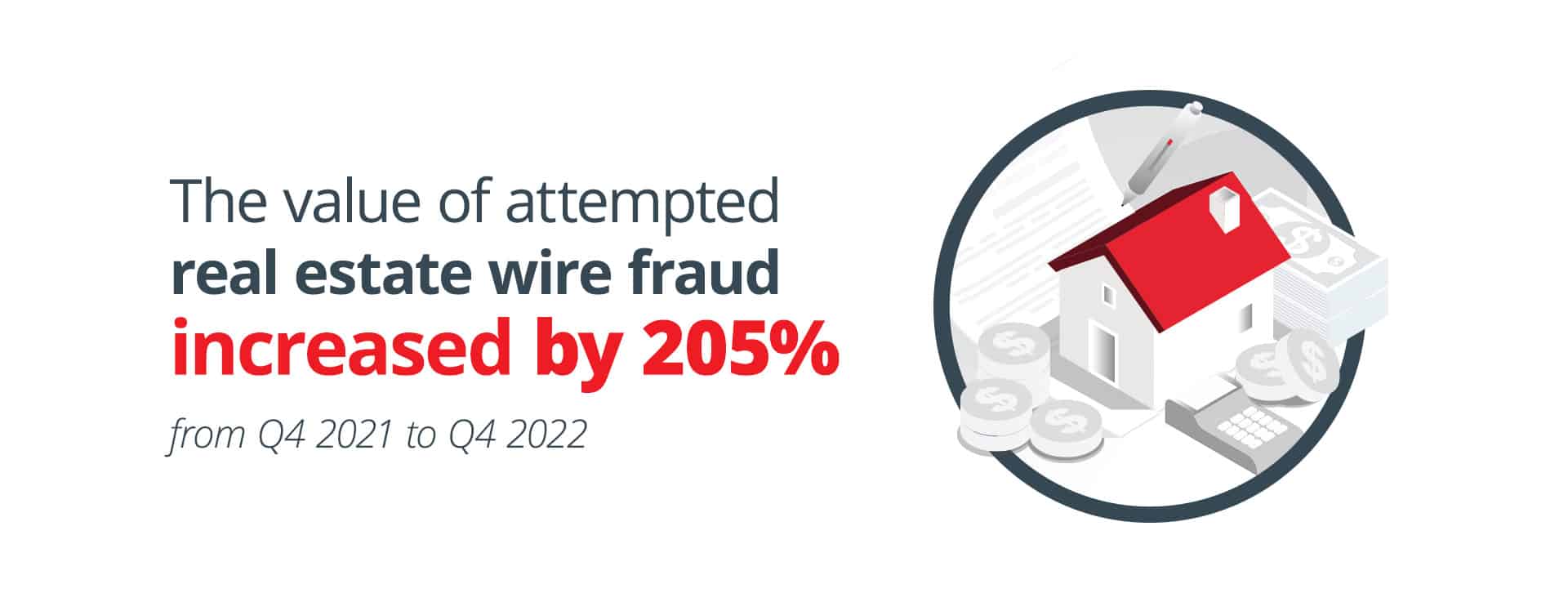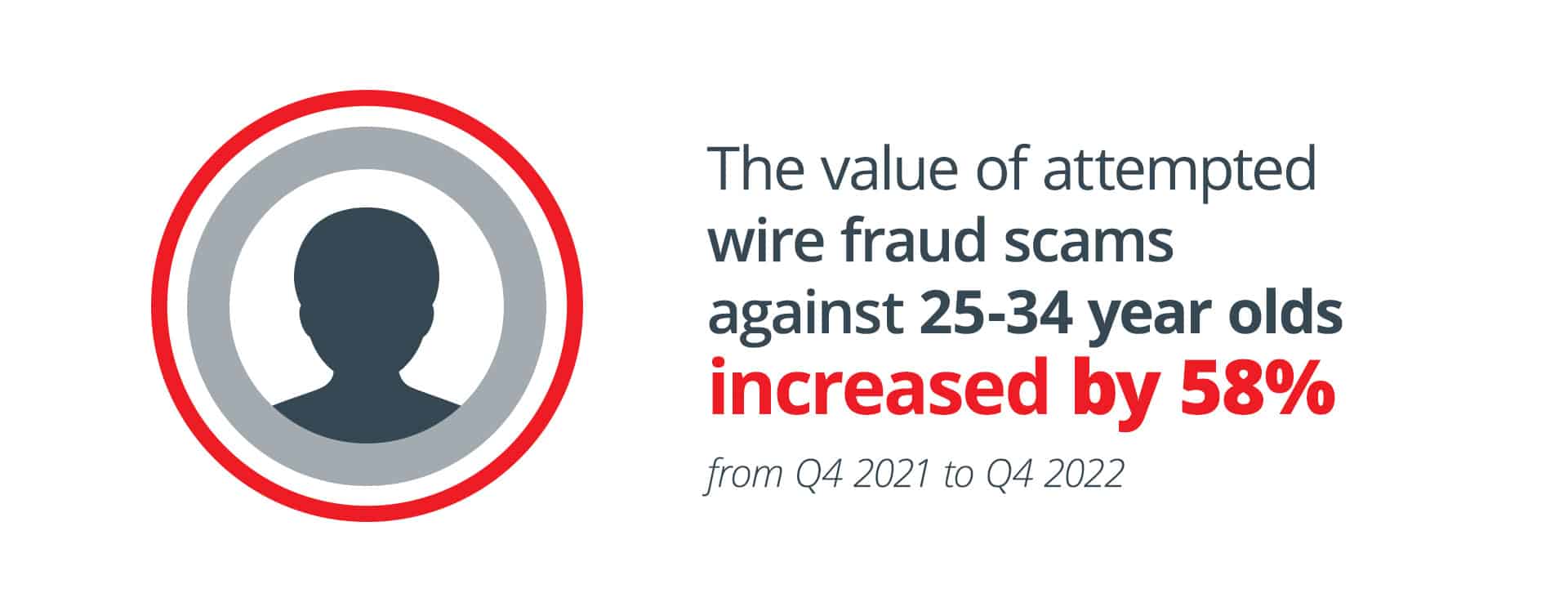Criminals are prolific and persistent in their attempts to defraud their victims. At Verafin, we know the first step in protecting financial institutions from these pervasive threats is understanding how, to whom and where fraud is occurring as criminals evolve their wire fraud scams. As the industry continues to watch and wait for any changes in the discussion around a potential liability shift, staying a step ahead of fraud is the right strategy.
In our upcoming Cloud Insights: Wire Fraud Benchmarking Report for Q2 2023, we share attempted wire fraud trends and statistics observed in the Verafin Cloud from Q4 2020 to Q4 2022. This blog describes key highlights from our expert analysis — for more insights, watch our most recent Webinar.
Wire Fraud Attempts Stay High
Uncovered in the Verafin Cloud, the total value of wire fraud attempts in Q4 2022, discovered across our network of 2400 financial institution, totalled $118M. The average value of an attempt across all four analyzed segments (persons, elderly persons, business, and title companies) was over $52K, remaining consistently high during the last nine quarters of reporting.
Real Estate Fraud Goes on the Market
“The [real estate] sector remains a target for BEC attacks exploiting the high monetary values generally associated with real estate transactions and the various communications between entities involved in the real estate title and closing processes.”
– FinCEN, 2023
The Real Estate industry saw the most significant rise in attempted wire fraud by value from Q4 2021 to Q4 2022 increasing 205%. This finding echoes a recent FinCEN Financial Trend Analysis report which showed patterns of increasing fraud against the Real Estate industry.
 For remaining sectors, from Q4 2021 to Q4 2022, attempted wire fraud against businesses increased in terms of basis points by value and occurrence, with the typical value per attempt rising from $107K to $121K. In Q4 2022, the Professional Services industry saw the highest attempts by occurrence and value at 16.8% and 27.8% respectively.
For remaining sectors, from Q4 2021 to Q4 2022, attempted wire fraud against businesses increased in terms of basis points by value and occurrence, with the typical value per attempt rising from $107K to $121K. In Q4 2022, the Professional Services industry saw the highest attempts by occurrence and value at 16.8% and 27.8% respectively.
Consumer Wire Fraud Trending Higher
The mean and median value of attempted wire fraud against individuals increased from Q4 2021 to Q4 2022, with the median rising from $9.9K to $12K, and the mean seeing a significant increase during this timeframe from $26.5K to $31.6K. As seen in previous quarters, people aged 55 or older continue to be the greatest focus of wire fraud accounting for 71.3% of attempted occurrences and 74.5% of attempted wire fraud value.
Q4 2022 found an intriguing insight, with individuals between the ages of 25-34 seeing a 58% increase in the value of an attempted wire fraud from Q4 2021. These increases possibly indicate increasing digital scams targeted at online goods and services, or criminals’ growing use of social media to target unsuspecting youth — a trend our experts are watching closely as payment fraud evolves.
Seniors Aged 65-74: A Focus for Fraudsters
As FinCEN has noted, elder financial exploitation is rampant, and financial institutions must do their utmost “to detect, prevent, and report suspicious financial transactions.” In Q4 2022, the age group appearing to be most at risk of wire fraud are people aged 65 to 74, who account for the most wire fraud attempts by value (37.4%) and occurrence (31.7%).
People aged 55 or older continued to see the typical value of wire fraud attempts remain high ($33K), with the median value of an attempt increasing by 36.4% to a new high since the start of reporting ($15K) in Q4 2022.
Domestic Wire Fraud Trends Continue
In Q4 2022, the top destination states for wire fraud by occurrence and value continued to be California, New York, Florida, and Texas, driven largely by the population density of these states and increased opportunity for mule recruitment. Mule activities can obfuscate criminals’ identities and their sources of funds while facilitating the deposit and flow of illicit proceeds around the world.
Domestic wire fraud accounted for 88.7% of the value and 85% of occurrences in Q4 2022. From Q4 2021 to Q4 2022, the typical value of a wire fraud attempt destined for a location within the United States was $15K, an increase of 17% during that time.
International Destinations for Wire Fraud
In Q4 2022, the typical value of a wire fraud attempt destined for locations outside the United States was $17.3K. By occurrence, international wire fraud attempts were most frequently destined for Hong Kong, Mexico, or Thailand. By value, the top destinations for wire fraud attempts were Hong Kong, South Africa, and Thailand.
In Q4 2022, the typical value of a wire fraud attempt destined for locations outside the United States was $17.3K.
Catch More Fraud with a Consortium Approach
As financial institutions look to balance customer expectations with the continued evolution of fraud scams, a fraud prevention program that looks at the risk of a transaction from sender to receiver is essential.
Verafin offers a unique payment fraud solution that combines behavioral analytic techniques with insights from our Consortium Analytics. This approach leverages our consortium of over 2400 financial institutions to provide a complete picture of risk — without sharing Personally Identifiable Information (PII).
Using the power of over 300 million account profiles to assess counterparty risk, our Consortium Analytics reduce false positives — by an average of 40% — and alert you to increased risk when a payment is destined to an account that is unknown to the network. Our approach effectively detects fraudulent transactions, allowing financial institutions to assess payments with the help of the consortium to ensure the transfers are destined to a beneficiary with a history of legitimate activity — protecting your institution and your customers.
For more information on our consortium approach to combating payment fraud, download our Product Brochure.




